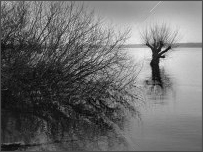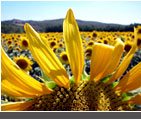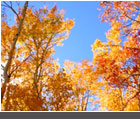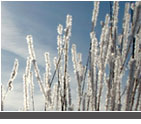
The
Moche people lived in what
is now Peru.
El Niño flooding is
still a problem
for today's inhabitants. |
|
|
|
Sometime
in the mid-sixth century A.D., a strong El Niño brought
torrential rains and catastrophic flooding to the northern
coast of Peru. Thick, black clouds massed offshore, then
thickened as they moved over the densely populated coastal
river valleys. Heavy raindrops pattered on the arid ground,
cracked and hard from severe drought. A powerful smell of
wet earth permeated the air as the shower intensified, then
stopped abruptly. Even thicker clouds massed overhead, mantling
the surrounding hilltops.
Then the rain started, carried by a roiling wind from the
ocean. Curtains of water pounded the valley in solid sheets.
The rain continued
unabated – mist, steady downpours, intense cloudbursts that
flowed down dry hillsides. Normally placid rivers fueled by mountain
runoff burst their banks and inundated the densely cultivated floodplain.
Dikes gave way, canals burst, hundreds of acres of irrigated land
became a freshwater lake. Deep layers of silt cascaded over carefully
tended field systems. The work of generations vanished in a few hours
as the rains and floods carried everything before them. Muddy water
overwhelmed dozens of small villages clustered on the alluvium.
Houses collapsed, thatched roofs floated downstream. Hundreds drowned
as the people fled for their lives and camped on higher ground. Even
when the rain stopped and the wind dropped, the destruction continued.
White steam rose from a sea of drying mud where green, irrigated
crops once grew. Teams of villagers labored frantically to save untouched
fields threatened by rising waters. Hills and valleys were awash.
Erosion gullies gashed desert hillsides as millions of tons of sand
and river silt swept out to sea.
Page 1 of 2
|
|
|




